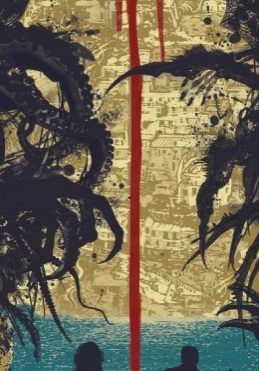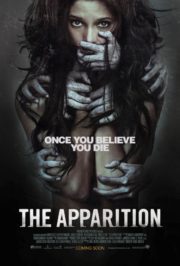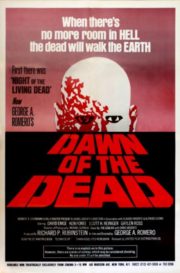“Something lurking beneath the surface.”
Love in the Shadows
*Spring,* directed by Justin Benson and Aaron Moorhead, made its spine-chilling debut in 2015. This horror film merges supernatural elements with romantic undertones, crafting a unique narrative that stands apart in the genre. The story follows Evan (Lou Taylor Pucci), a young man reeling from the death of his mother, who escapes to Italy in search of healing. There, he encounters the mysterious and alluring Louise (Nadia Hilker), who harbors a dark secret linked to terrifying presences lurking beneath her surface. Although it presents itself as a romantic drama, the tension builds steadily as horror unfolds, inviting viewers on an unexpected journey through love and fear.
Crafting the Horror Atmosphere
*Spring* expertly creates its horror atmosphere through an intricate blend of foreboding and suspense. The film gradually unravels the mystery surrounding Louise, establishing a sense of dread that hangs over every romantic encounter. Captivating visuals juxtaposed against intimate moments enhance the horror factor, leaving viewers unsettled yet engaged. The unsettling tone is set early, and it perpetuates throughout the film, engaging audiences in an intricate dance of love and terror.
Directorial Tension: Building Fear Through Artistry
Directors Benson and Moorhead masterfully understand the mechanics of horror. By intertwining romance with the supernatural, they evoke deep emotional responses while maintaining tension throughout. The pacing is deliberate, establishing an expansive narrative arc that gradually transitions from warm and inviting to stark and menacing. The careful layering of information keeps the audience on edge, where each revelation leads to unexpected anxiety.
Visual Language: Cinematography at Its Best
Cinematographer Shivaji Patil’s work is nothing short of breathtaking. The lighting choices create a stark contrast between the idyllic landscapes of Italy and the darker, twisted reality beneath.
– Color Palettes : The film adopts warm hues during romantic scenes that slowly shift to cooler, darker tones when horror ensues.
– Camera Angles : Unique perspectives enhance the disorientation felt by the characters. Close-ups on Evan’s face capture his confusion and fear, while wider shots establish an overpowering environment.
– Special Effects : The use of practical effects versus CGI grounds the horror in reality, making it more relatable and unnerving.
Ultimately, the cinematography complements the unfolding narrative flawlessly, enriching the horror experience.
Soundscapes of Terror: The Role of Audio
The emotional depth of *Spring* is further amplified by its haunting soundtrack and effective sound design. The score, composed by the directors themselves, weaves a delicate interplay between ethereal melodies and foreboding rhythms.
– Effective Use of Silenc : Moments of silence are particularly chilling, allowing dread to resonate in the stillness.
– **Sound Effects : The distant echoes of unnatural noises foreshadow horrors yet to come, reaffirming the film’s supernatural elements.
Together, the audio effectively ramps up the tension, contributing significantly to the spine-tingling ambiance.
Unearthly Performances: Actors as Vessels of Terror
Pucci and Hilker deliver performances that deeply anchor *Spring*. Their chemistry is palpable, rendering romantic moments genuine; however, it is their portrayal of psychological complexity during moments of horror that creates lasting impressions.
– Character Development : The characters are flawed yet relatable, allowing the audience to invest in their journey.
– Reactions to Terror : Their responses to growing dread feel authentic, enhancing the film’s emotional resonance.
Through nuanced performances, the actors breathe life into the horror, heightening the overall sense of unease.
Horror Elements: A Unique Blend of Genres
*Spring* successfully combines psychological horror with elements of supernatural dread. As a romantic horror film, it fits within the subgenre while simultaneously challenging conventions, leaning into philosophical notions of love entwined with terror.
– Mechanical Elements : Themes of transformation, both physically and emotionally, manifest through horror mechanics, offering a fresh perspective on fear.
This blend of genres creates a thought-provoking narrative, inviting viewers to explore the deeper implications of love’s complexities.
Fractured Fears: Methods of Fright
The film introduces various techniques designed to elicit fear:
– Psychological Investment : The slow build of tension creates a sense of dread that lingers.
– Moments of Genial Shock : While not excessively gory, *Spring* employs sudden visual shocks effectively.
The mixture of these techniques means to disturb the audience psychologically, allowing for a broader interpretation of horror.
Exploring Deeper Themes: More than Just a Genre Exercise
The narrative wraps itself around themes of grief, healing, and the transformative power of love. By incorporating elements of horror, the film highlights the complexities of relationships and the darker sides of human emotion.
– Societal Commentary : Spring also explores identity, as the characters confront inner demons and outer realities. This exploration invites viewers to resonate depths within their own emotional experiences.
The film uses horror as a vessel for deeper conversations, enriching its impact and relatability.
Our Perspective: An Uneasy Yet Rewarding Journey
*Spring* deftly treads the line between horror and romance, offering a fresh narrative within its genre. The visual composition, sound design, and performances create a unique atmospheric experience.
While it may not deliver jump scares in abundance, the cumulative effect of its dread and emotional weight renders it genuinely unsettling, leaving a lasting impression on those who dare to delve into it.
Who Should Watch? A Corner for Enthusiasts
Horror aficionados and fans of unconventional romance will find much to appreciate in *Spring*. It may challenge casual viewers, particularly those seeking straightforward scares, but those willing to explore the emotional narrative will find rewards.
Comparative Echoes: A Bridge Between Realms
In comparison to other notable horror films, *Spring* shares thematic elements with works such as *Let the Right One In* and *The Fly*. Through its unique amalgamation of romancing terror, it carves out a niche within the horror landscape.
Final Assessment: A Compelling Fusion of Horror and Heart
*Spring* succeeds in marrying horror with intimacy, creating a narrative that resonates emotionally with its audience. The film’s strengths lie in its atmospheric tension and thought-provoking themes, while its weakness might be its pacing for those expecting more direct horror.
In summary, this film offers an innovative and compelling experience, solidifying its place in the annals of modern horror. However, viewer discretion is advised due to mature themes and graphic content, notably involving body horror. If you seek a film that weaves together the strands of love and existential dread, *Spring* is a haunting bloom worth witnessing.




